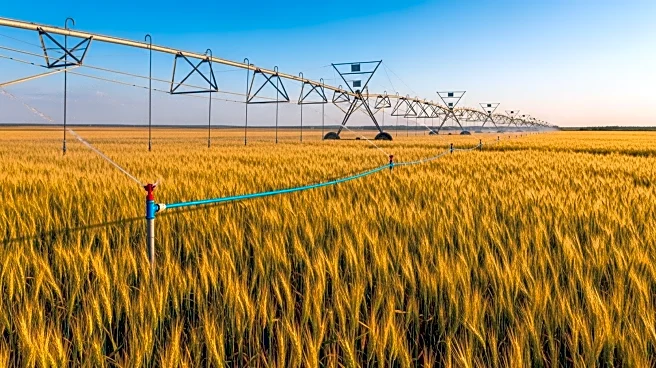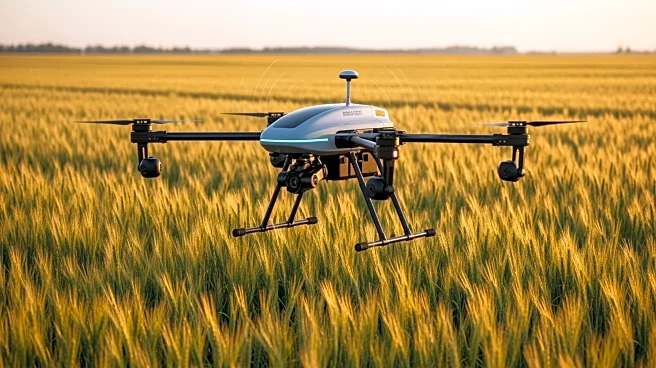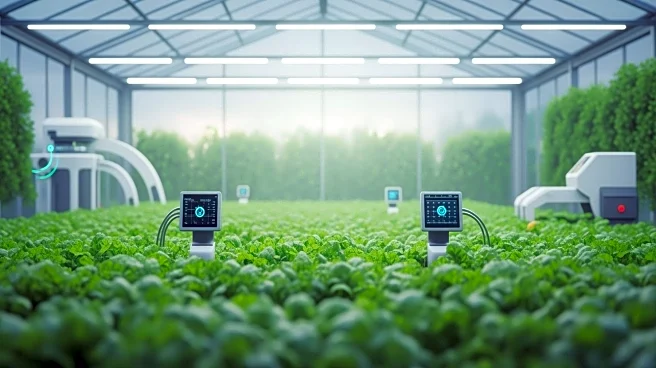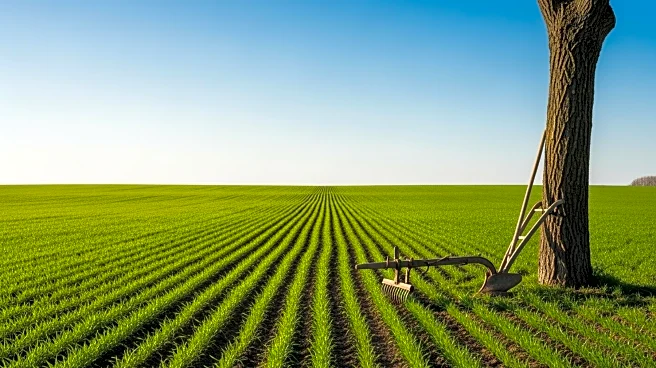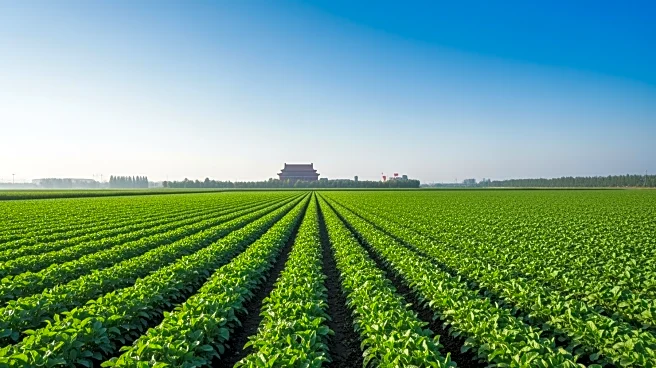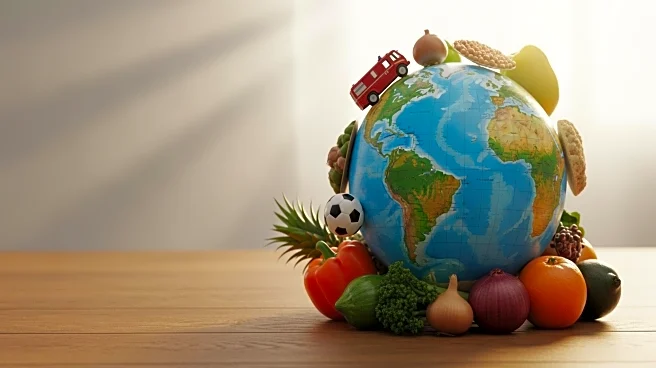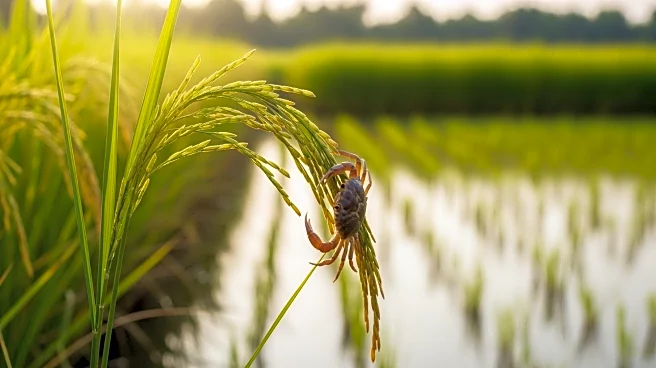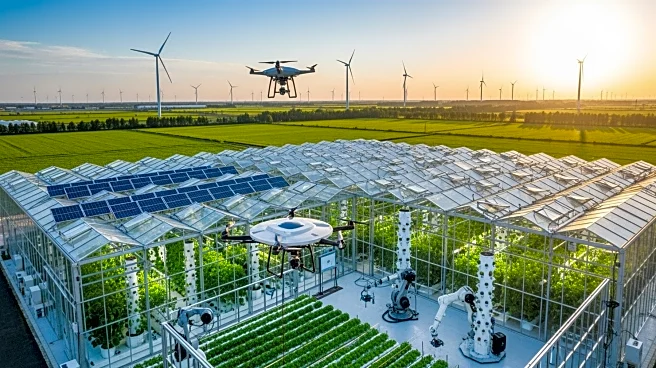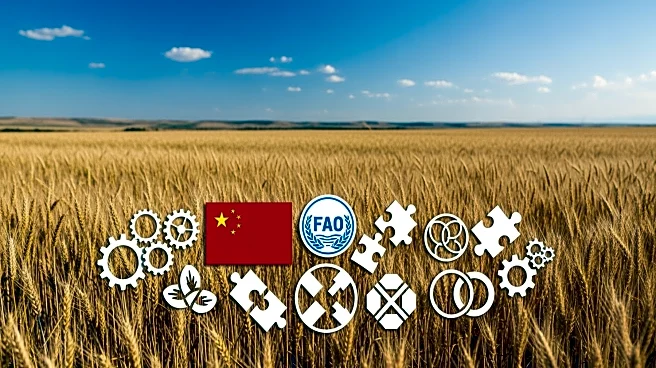What's Happening?
Farmers in Heilongjiang province, China, are adopting innovative agricultural practices to increase yields and income. In Tangyuan county, the co-cultivation of crabs and rice is gaining popularity. This method involves using crabs to loosen soil, eat
weeds, and fertilize fields, while rice paddies provide crabs with shade and natural feed. The approach reduces chemical use and enhances crop health, offering farmers a dual source of income. The model has been widely applied across the county, with significant economic benefits reported.
Why It's Important?
The integration of ecological and economic benefits in agriculture represents a shift towards more sustainable farming practices. By reducing reliance on chemicals and enhancing biodiversity, farmers can improve environmental health while boosting productivity. This approach not only supports local economies but also sets a precedent for modern agriculture techniques that can be replicated in other regions. The success of these methods may encourage further innovation and investment in sustainable agriculture.
What's Next?
Farmers in Heilongjiang are planning to expand agritourism ventures, such as crab-catching festivals and farm stays, to attract tourists and generate additional income. The continued adoption of co-cultivation models may lead to increased collaboration between local governments and agricultural cooperatives, promoting further research and development in sustainable farming practices. As these methods gain traction, they could influence agricultural policies and practices on a broader scale.
Beyond the Headlines
The success of modern agriculture techniques in Heilongjiang highlights the potential for integrating traditional farming with innovative practices to address global food security challenges. By prioritizing ecological health and economic viability, these methods contribute to a more resilient agricultural system. The approach may inspire similar initiatives worldwide, fostering a global movement towards sustainable agriculture.
